QuestionI just purchased a 125 gallon aquarium and had some questions on how to get it going with the best possible chance for success. Here are the details:
125 gallon tank used to be salt
(still has residue on the side walls)
I want to use it as freshwater
there is no filter or lights included in this
I'm looking to set up a community tank and would like to know if you have some advice on ensuring that all traces of salt are removed, and possibly if you have any advice on appropriate filters, good used plants, gravel etc.
Please feel to respond to djcrewz@rogers.com
AnswerHi Robin;
The residue you see is probably just mineral deposits. They shouldn't cause a problem. If the tank is glass you can scrape it with a razor blade. (be careful and don't cut the sealant) If it is a plastic tank you can't scrape it or you will have scratches. Just have to soak it with vinegar and hope for the best. I use paper towels or rags soaked with vinegar and lay them on the residue. Let them sit for an hour or so, keeping wet with vinegar. Wipe them and some of it may come off. Rinse well before filling the tank. Chances are, you won't even see most of these mineral stains when there is water in the tank. They are very prominent when dry.
I think the following link from About.com (owns AllExperts.com) will help you a great deal right now. It goes into detail and has photos and charts to help you;
http://freshaquarium.about.com/od/selectingequipment/
Since you already have the tank, just skip that part and read what relates to what you need.
Here are some links on filters and different choices;
http://freshaquarium.about.com/cs/filtration/bb/bybfilter.htm
http://freshaquarium.about.com/cs/filtration/tp/canfilter.htm
http://freshaquarium.about.com/cs/filtration/tp/powerfilter.htm
As for lights and a top, check with your local fish store. Give them the exact measurements of your tank. If your tank has a brand name on it somewhere, that is helpful too. If you can also take a photo of the top of the tank where the hood or glass top sits, a good local fish store owner or employee can help you get one that fits. Unless the tank is very old or a very unique brand, there is usually a place that can find you one somewhere. Or.....
If you want to build your own hood;
http://freshaquarium.about.com/od/canopiesandhoods/
Let me know what questions you have beyond the links I sent you to. Cruise around the About.com freshwater fish site and see what you can find. LOTS of good info there!
(Also; I included a copy of my article on new tanks at the end of this letter for you to read. It will help you get the tank started once you are ready for fish.)
Followups welcome
At Your Service;
Chris Robbins
Come on over and join us on the freshwater fish forum at About.com to get even more information too;
http://freshaquarium.about.com/od/questionsanswers/a/naavigateforum.htm
My member name is ChrisR62. See You There!
**********
New Tank Syndrome or Break-in Period
So you have a new tank and you filled it up, put the filter together, mounted the heater into place and turned on the lights. You have all the plants and decorations where you want them....
You are ready for fish.
But, your filter is not ready for a full tank of fish yet.
The filter is running and moving the water and cleaning out crud, right? Of course!
But a very important part of your filter is the part you can't see. An aquarium filter removes the larger visible stuff, but it also must remove the dissolved fish waste that turns into ammonia in the water. To do this, special bacteria must grow in the filter system and on the particles of gravel in the bottom of your tank. This process occurs even on a limited scale in little fish bowls that have no filter in them.
This is "New-Tank Syndrome" or the "Break-in Period". The entire process takes 6 to 8 weeks to complete because these "nitrifying" bacteria grow quite slowly.
Start off with only two hardy fish for every ten gallons of water and don't add more until the 6 to 8 weeks has gone by. Hard to be patient, but it is worth it to keep your fish alive and healthy. As a matter of fact, the bacteria cannot develop without fish in the tank. You can let that tank sit forever without fish in it, but as soon as the first fish goes in the process begins. Avoid changing the filter pads during break-in. This removes the bacterial colonies that are essential to a balanced aquarium. You can rinse the filter pad out in a container of aquarium water. This will preserve most of the bacteria colonies while still allowing your filter to flow freely. Even using bacteria additives and water conditioners when you first set up the tank will not make a tank cycle by itself. If there are no fish to provide food (fish waste) for the bacteria, the beneficial bacteria cultures will die and you will have to start the colonies all over again once fish are added to the tank.
Feed your new fish VERY lightly. Any excess food will cause additional waste your system cannot afford to have right now. If you see food floating around or lying on the plants and gravel after five minutes, too much food is going into the tank. Cut back a little each time you feed until it is ALL gone 5 minutes after you feed them.
During this "break-in period" your tank will become cloudy and milky looking. You may have to tolerate this for the entire break-in period but it is only temporary. Changing 25% of the water three times a week until the break-in period is over helps a great deal. Changing water reduces the ammonia and nitrites that rise while the bacteria continues to multiply. If ammonia and/or nitrites become too high, your fish will become stressed and possibly die. Use a good water conditioner when you replace the water and make sure it is the right temperature to avoid shocking your fish.
When the break-in is over after 6 to 8 weeks and there are no nitrites or ammonia present in the water you can slowly add more fish. Add one or two every week until you reach the desired population. This allows the bacteria to adjust to the new population every time before adding more. Monitor the nitrites and ammonia to be sure they don't come up. If they do, make a 25% water change and check them again. Don't add the next fish until the levels are down again.
The safe maximum population for any size tank is one inch of adult fish for every gallon of water in the tank. Do some research to be sure of the fish you are interested in. Even though they are small when you buy them, you have to base your population calculations on full-sized adult fish. Many hobbyists have up to two inches per gallon but this can be risky. If a water quality issue arises or a disease occurs it will spread fast and furious in an over-populated tank. In any case, 25% water changes every week to two weeks are absolutely essential for the health of your fish.
Following these guidelines will help you get your new tank on the right track.
**********

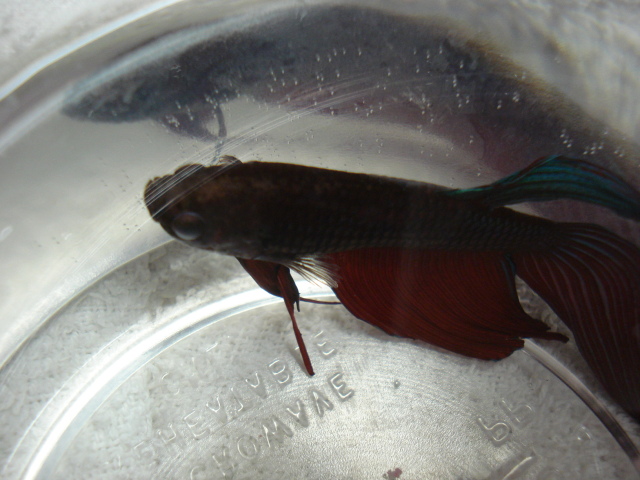 betta with beginnings of fungus..
Question
Mercutio- fungus?
Hi! My betta Mercutio has wh
betta with beginnings of fungus..
Question
Mercutio- fungus?
Hi! My betta Mercutio has wh
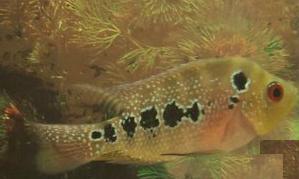 flower horn fish
Question
my fh
please identify my flower horns sex male
flower horn fish
Question
my fh
please identify my flower horns sex male
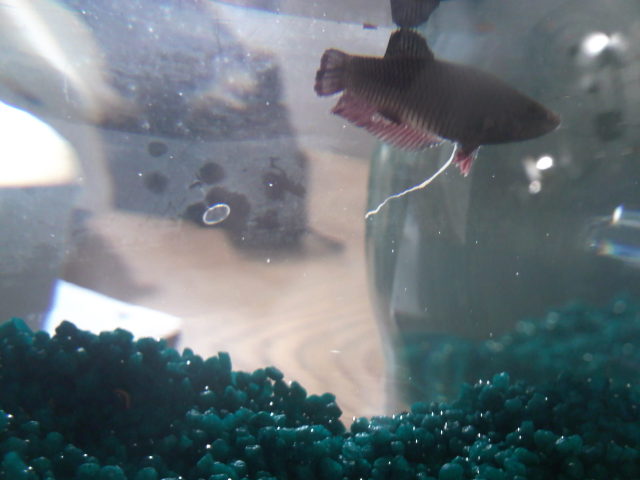 My betta has a white tube hanging,is it sick?
Question
Hanging White tube
Last week I bought a femal
My betta has a white tube hanging,is it sick?
Question
Hanging White tube
Last week I bought a femal
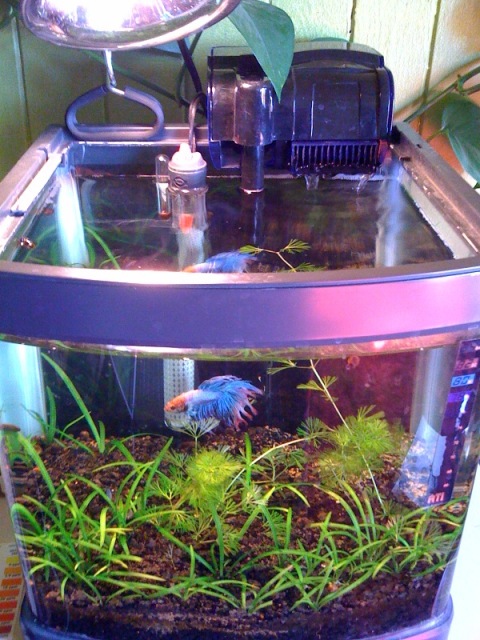 sick betta and water quality
Question
aquarium set-up
Hello! Thank u so much for you
sick betta and water quality
Question
aquarium set-up
Hello! Thank u so much for you
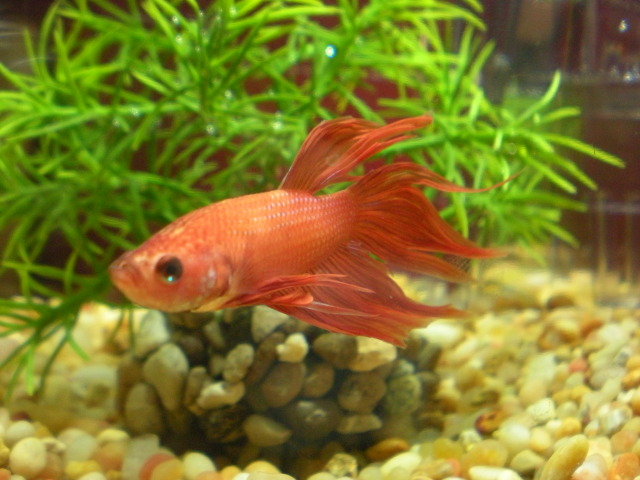 New Betta Antics
Question
Miso
Hello!
I just got my first betta after
New Betta Antics
Question
Miso
Hello!
I just got my first betta after